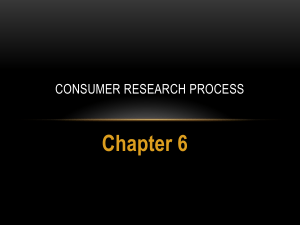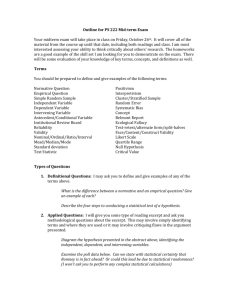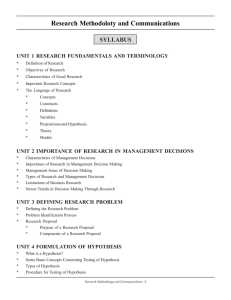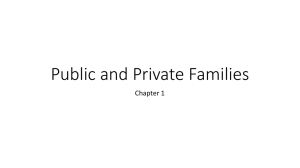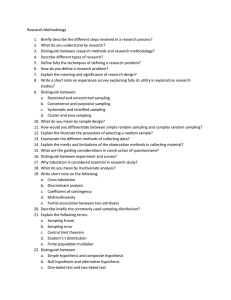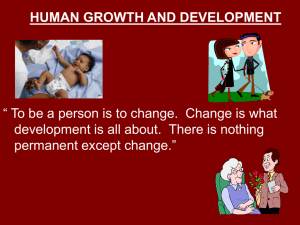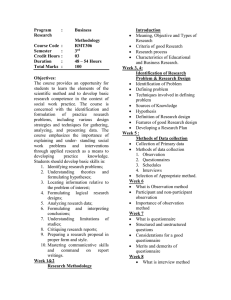INTRODUCTION: Chapter I
advertisement
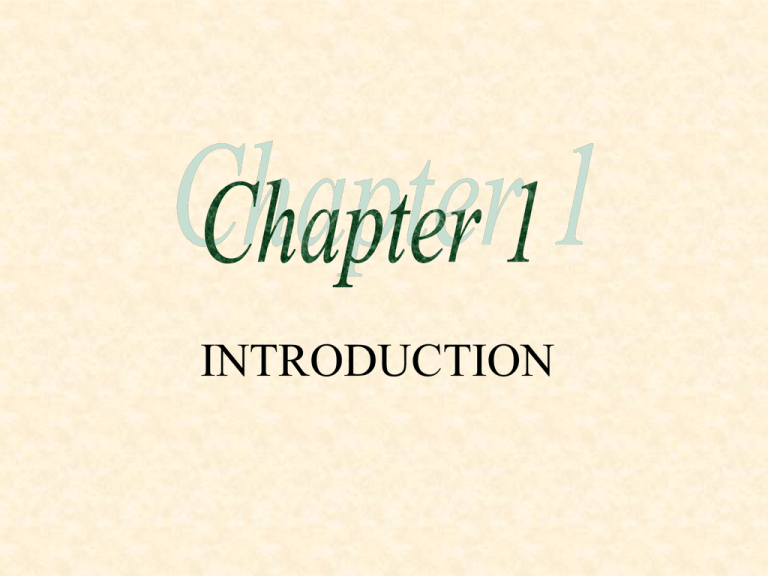
INTRODUCTION Development: A Definition The orderly and sequential changes that occur with the passage of time as an organism moves from conception to death. The Major Concerns of Science 1. 2. 3. 4. Describe Explain Predict Control Major Domains of Development 1. Physical 2. Cognitive 3. Emotional -social The Processes of Development 1. Growth 2. Maturation 3. Learning Context of Development ECOLOGICAL APPROACH (Bronfenbrenner) 1. Microsystem 2. Mesosystem 3. Exosystem 4. Macrosystem Timing of Developmental Events Normative Age-graded Influences Normative History-graded Influences Non-normative Life Events Cultural Variability Culture: Learned Social heritage of a people. patterns for thinking, feeling and acting transmitted from one generation to the next. Changing Conceptions of Age Infancy Childhood Adolescence Adulthood Old age Connecting Historical “Areas of Concern” Turn of the 20th Century The 1950’s and 1960’s Contemporary Issues Back to the Future The Nature of Developmental Research The Scientific Method Select a researchable problem Formulate a hypothesis Test the hypothesis Draw conclusions about the hypothesis Make the findings of the study available to the scientific community Research: Longitudinal Method Scientists study the SAME individuals at different points in their lives. Cross-Sectional Method Investigates development by simultaneously comparing DIFFERENT groups of persons varying in age. Sequential Methods Measuring time. more than one cohort over Experimental Method Experiment: Study in which the investigator manipulates one or more variables and measures the resulting changes in the other variables to attempt to determine the cause of a specific behavior Experimental Method Independent Variable Extraneous Variables Experimental Group Control Group Dependent Variable Limitations Case-Study Method The accumulation of developmental information of a single individual. Social Survey Method Researchers ask questions to a sample of individuals who are representative of the population of individuals likely to be affected Random sampling Naturalistic Observation Researchers intensively watch and record behavior as it occurs. Modifications: a. Time Sampling b. Event Sampling Cross-Cultural Studies Researchers compare data from two or more societies and cultures. Research Analysis Correlational Analysis Degree to which two or more behaviors are associated with each other Does not prove causation Can be used for predictive purposes Correlation Coefficient Numerical expression of the degree or extent of relationship between two variables or conditions. Ethical Standards for Human Development Research Respect and concern for the dignity and welfare of participants Informed consent Right to privacy



